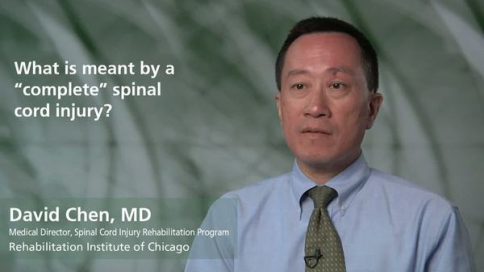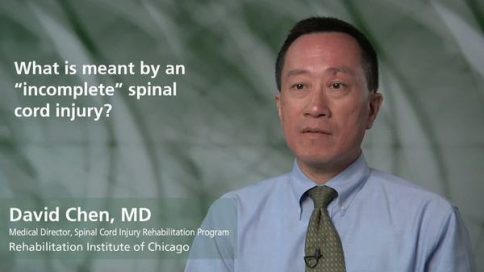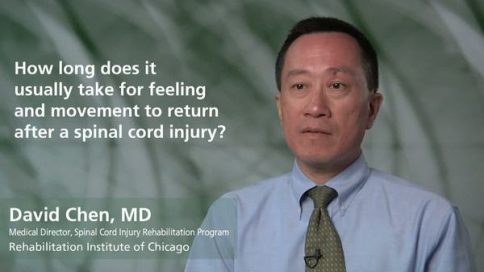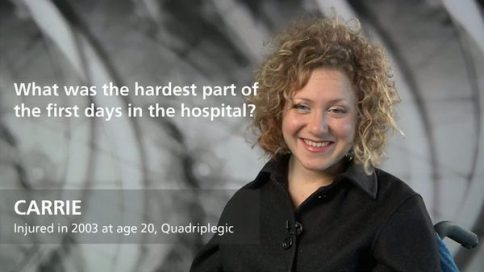Levels of Injury and What They Mean |
| What is a Spinal Cord Injury? ASIA Impairment Scale Levels of Injury and What They Mean Animated Spinal Cord Injury Chart Spinal Cord Injury Facts and Figures Care and Treatment After SCI Spinal Cord Injury Rehabilitation Pediatric Spinal Cord Injuries |
VIDEO— Anatomy of the Spinal Cord and How it Works
This video “Anatomy of the Spinal Cord and How it Works” is an easy-to-understand guide to the spinal pathway, the vital communication system that connects the brain and the body. It shows you where the cervical, thoracic, lumbar and sacral vertebrae are located on the spinal column and how the nerves branch from them to send messages to the brain about feeling and movement. It tells you the meaning of spinal injury classifications like C5, T4 and L1, and what they actually signify in terms of loss of feeling, control and the ability to move. A listing of the spinal cord injury levels and how they affect movement and sensation are right below the video on this page. You can also check the Animated Chart. Loss of movement and feeling depend on what part of the spine is damaged. Cervical Vertebrae Levels: C1 – C8 Cervical injuries above the C4 level may require a ventilator for the person to breathe. C6 injuries often result in shoulder and biceps control, but no control at the wrist or hand. C6 injuries generally yield wrist control, but no hand function. Individuals with C7 and T1 injuries can straighten their arms but still may have problems with their hands. Thoracic Vertebrae Levels: T1 – T12 The first thoracic vertebrae, T1, is located at approximately the same level as the top rib. Injuries in the thoracic region usually affect the chest and legs, and result in paraplegia. For T1 to T8 injuries, there is most often control of the hands, but lack of abdominal muscle control. Lower T-injuries (T9 – T12) allow good trunk control and good abdominal muscle control. Lumbar Vertebrae Levels: L1 – L5 Injuries to nerves in the area of L1 – L5 generally result in some loss of functioning of the hips and legs. Bowel, bladder and sexual function may also be impacted. Sacrum Levels: S1 – S5 The Sacral Vertebrae run from the pelvis to the end of the spinal column. Injuries to S1 – S5 generally result in some loss of functioning in the hips, legs, ankles and feet. Loss of control of bowel, bladder and sexual functions is also common. |






